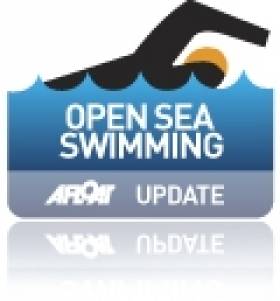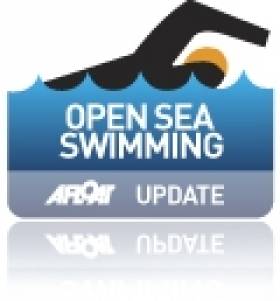Displaying items by tag: Liffey Swim Race
Liffey Swim Event Sees 335 Take to the Capital's Waters
#liffeyswim– The River Liffey glistened today as 335 men and women of all ages took to the water for the 94th Dublin City Liffey Swim, supported by Dublin City Council and staged by The Open Sea Committee.
219 men battled it out in the men's race that kicked off at 12.30pm at the Loop Line Bridge. Ciaran O'Driscoll from Half Moon Swimming Club in Great South Wall in Dublin won the men's race with an impressive time of 26.16 minutes. The women's race followed an hour later when 116 women took to Ireland's most famous river for their chance to swim competitively through the heart of Dublin city. Gina Murphy from Glenalbyn Masters in Stillorgan, Co Dublin crossed the winning line at the East Link Toll Bridge after only 32.22 minutes.
A special presentation with the Lord Mayor took place on the Cill Airne at 3.15pm when the winners were awarded their winners cups as well as a print of the historic 1923 Jack B Yeats painting titled "The Liffey Swim."
Speaking about the historic race, the Lord Mayor Oisín Quinn commented, "The Dublin City Liffey Swim has been growing in attendance year on year which illustrates just how important the legacy of the race is after 94 years. I would like to congratulate Ciaran and Gina as they have their names added to the historical list of Dublin City Liffey Swim winners. This year Dublin City Council is delighted to be in a position to provide additional support to this fantastic sporting event with the introduction of the first Liffey Living Festival and we hope that everyone that has attended the swim and festival has enjoyed an exhilarating free family day out."
The infectious atmosphere of the swim was carried on in "The Liffey Living Festival" presented by Dublin City Council in Grand Canal Dock where they were treated to an evening of free family activities such as giant sized street games, a live band "The Ships", ambient DJ and a specially erected floating open-air cinema, showing the classic movie "The Swimmer"!
Brian O'Dwyer Wins Liffey Swim (Results HERE)
The 90th annual Dublin Liffey Swim sponsored by Dublin City Council took place today, Saturday 11th September 2010. The swim, a 2.2kilometre race, started at Watling Street Bridge and finished at the Customs House. The swimmers were each assigned a time handicap depending on their level of proficiency.
Dublin City Council's 90th Liffey Swim Race 11th September 2010 - Men's & Women's Results
Men's Event – 13.30hrs Start
Winner - Brian O'Dwyer, Guinness Club (no handicap).
Second place - Terry Joyce, Eastern Bay Club (no handicap).
Third place - Vinnie Nicoletti, Guinness Club (no handicap).
Women's Event – 14.15hrs Start
Winner - Deirdre Dunne, St. Vincents Club (handicap 45 seconds).
Second place - Maeve Dunne (no handicap).
Third place - Susan Ritchie, Tallaght Masters Club (no handicap).






























































